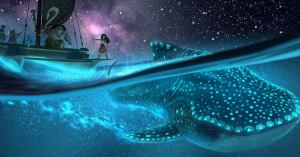Longtime Disney fans found the use of an older Peter Pan as a villain in Chip ‘N Dale: Rescue Rangers to be in poor taste, considering the tragic real-life story behind Bobby Driscoll. Driscoll was the voice of Peter Pan for Disney’s 1953 film adaptation and the character’s look was inspired by the actor. He died in 1968 at age 31 after a long struggle with substance abuse.
In the new Rescue Rangers film, Chip (John Mulaney) and Dale (Andy Samberg) meet an older Peter Pan (Will Arnett), who is disillusioned with the film industry. He lost his job in movies after getting too old and turned to crime. The movie, which was released on Disney+ exclusively Friday, is packed with references from dozens of Disney properties from all periods of the studio’s history.
Videos by PopCulture.com
After the movie hit Disney+, a handful of Disney fans took to Twitter to express their disapproval of the Peter Pan storyline because of Driscoll’s tragic life. After starring in many of Disney’s biggest live-action hits of the 1940s and early 1950s, the studio dropped him once he began aging out of younger roles. The studio canceled his contract in March 1953.
After leaving Disney, Driscoll’s parents enlisted him in a public Los Angeles high school, where he was bullied and began using drugs. His parents later re-enrolled him in the Hollywood Professional School, where child actors attended, but his drug use continued. In 1956, he faced a marijuana possession charge, which was later dropped. However, the damage to his career was done and he could only find a few television roles. His last movie was The Party Crashers (1958) and his last TV role came in a 1960 episode of Rawhide.
In 1961, the year after Driscoll and Marilyn Jean Rush divorced, Driscoll was sentenced to a drug rehab clinic in California. After he was released, he failed to find acting work. In 1965, he moved to New York City in the hopes of finding Broadway roles, but this plan didn’t work out. Instead, he joined Andy Warhol’s The Factory group as an outlet for his other art interest. His last known film performance was in an experimental 1965 movie called Dirt.
One of the most tragic parts of Driscoll’s life was that the press and general public didn’t know about his death until almost four years later. In 1971, Disney re-released Song of the South, and the press began wondering where Driscoll was. This led to the discovery that he died from heart failure caused by atherosclerosis in New York City in March 1968. Driscoll’s body went unclaimed and was buried in a pauper’s grave on Hart Island. His mother learned of his death in 1969, when she tried to contact Driscoll before his father died. By the time his mother and Disney found a fingerprint match at the New York police department, he had already been dead for over a year. Driscoll, the winner of the 1950 Academy Juvenile Award for So Dear to My Heart and The Window, was 31.




